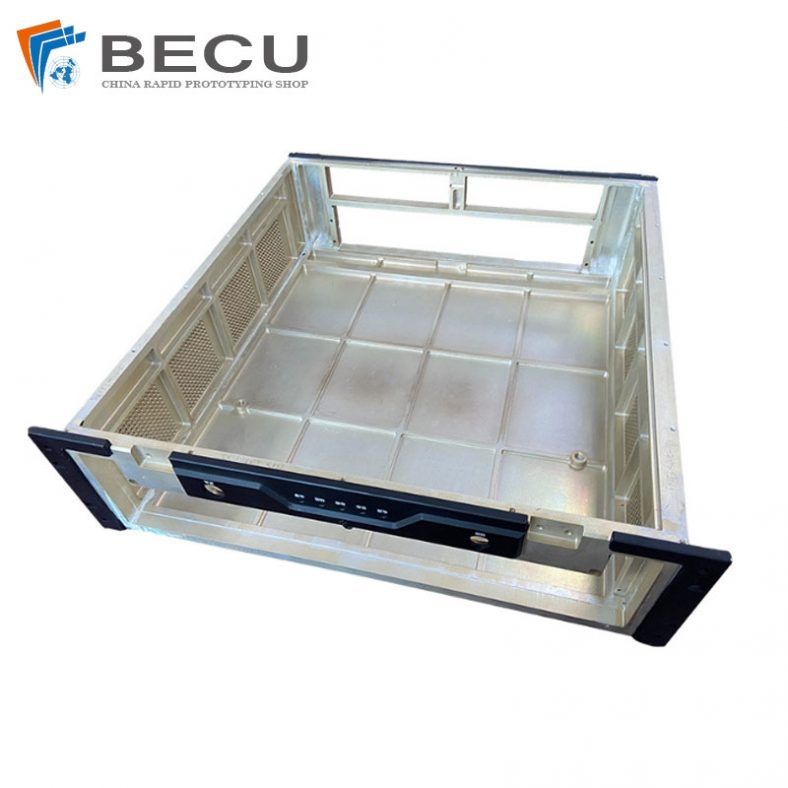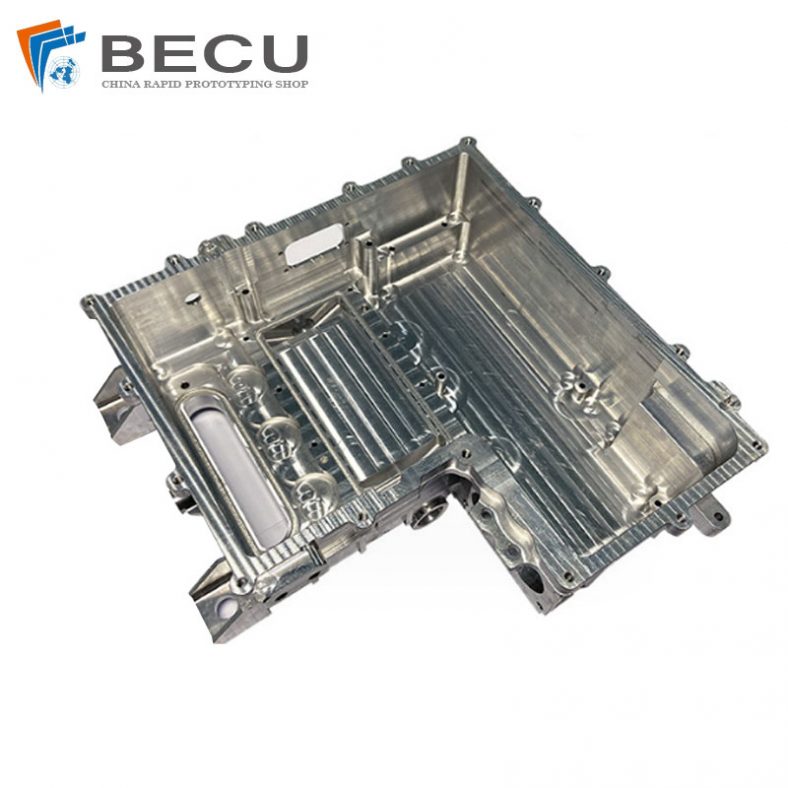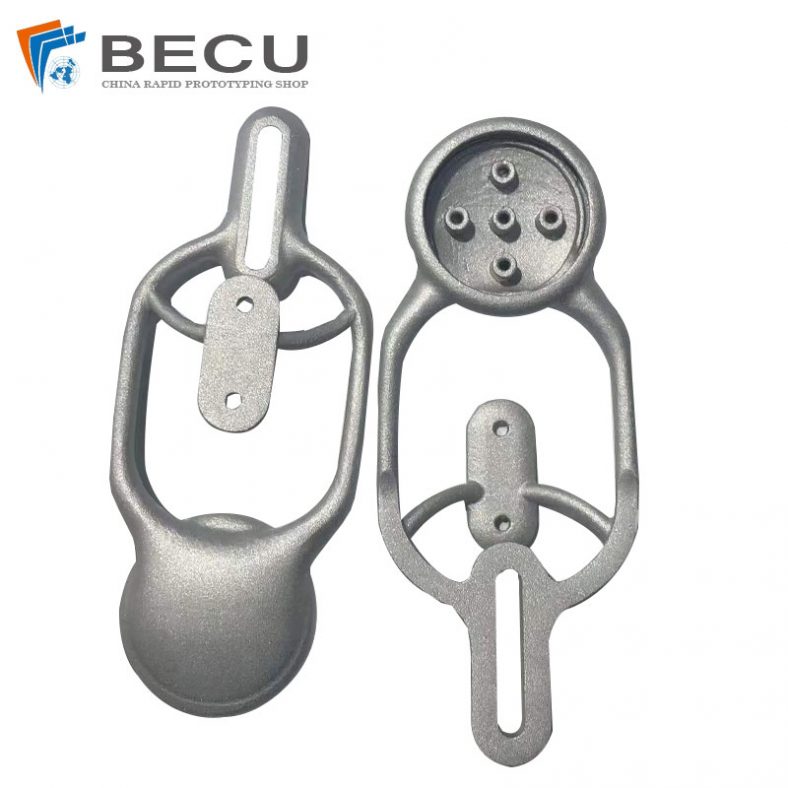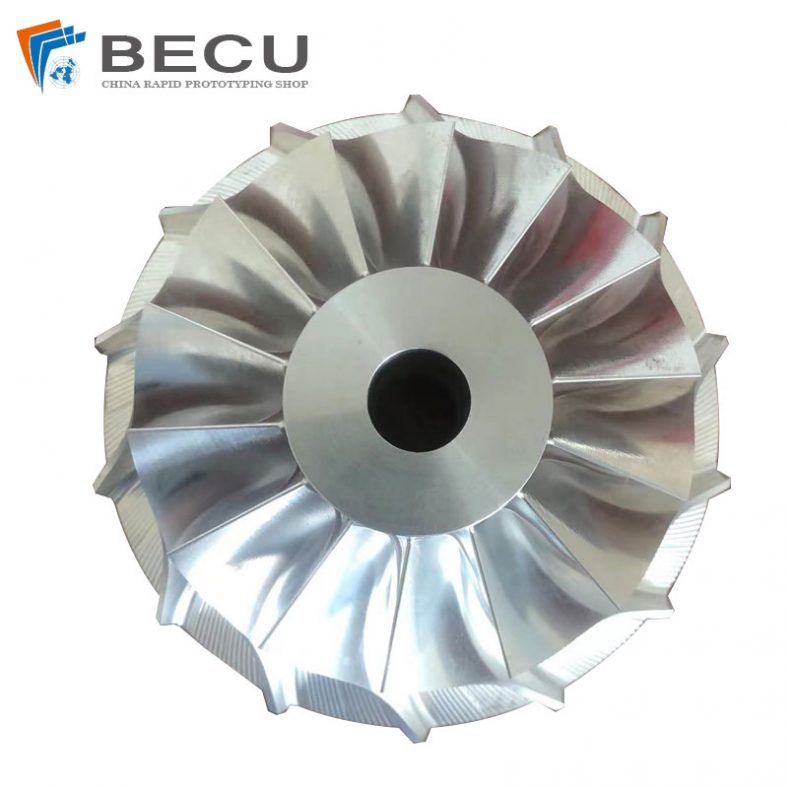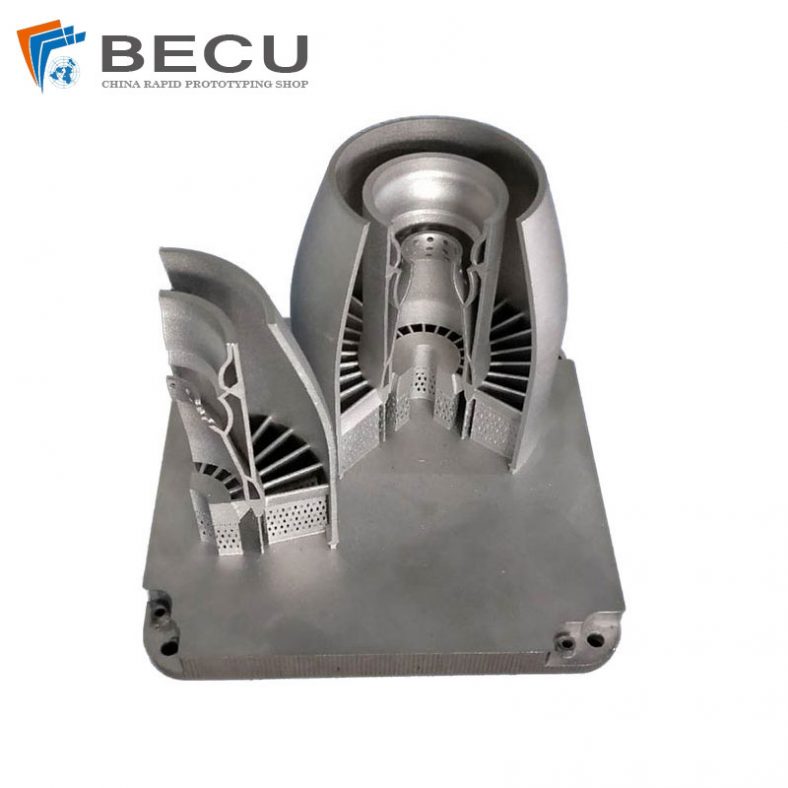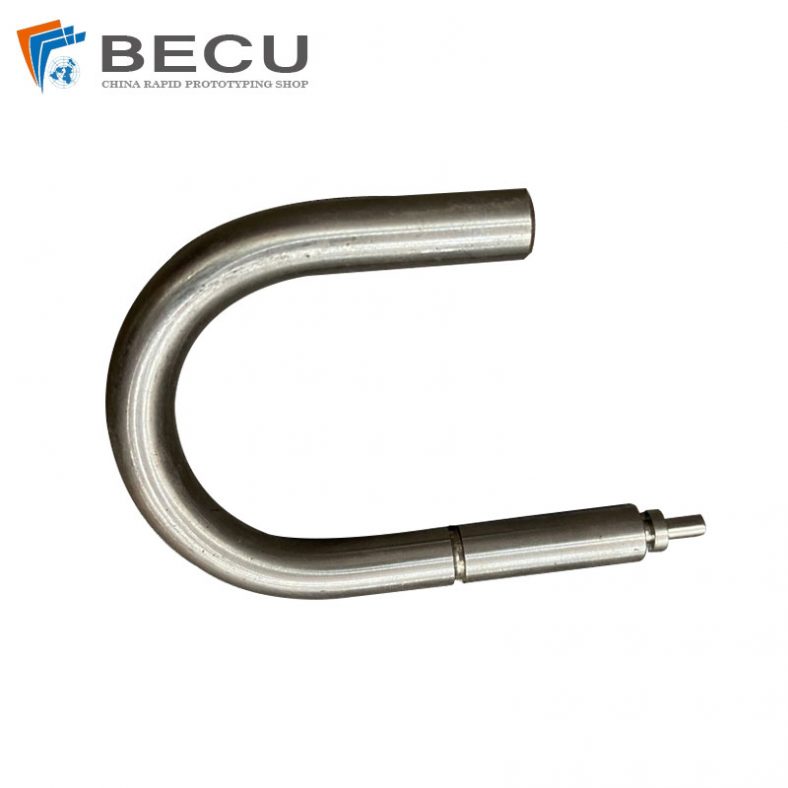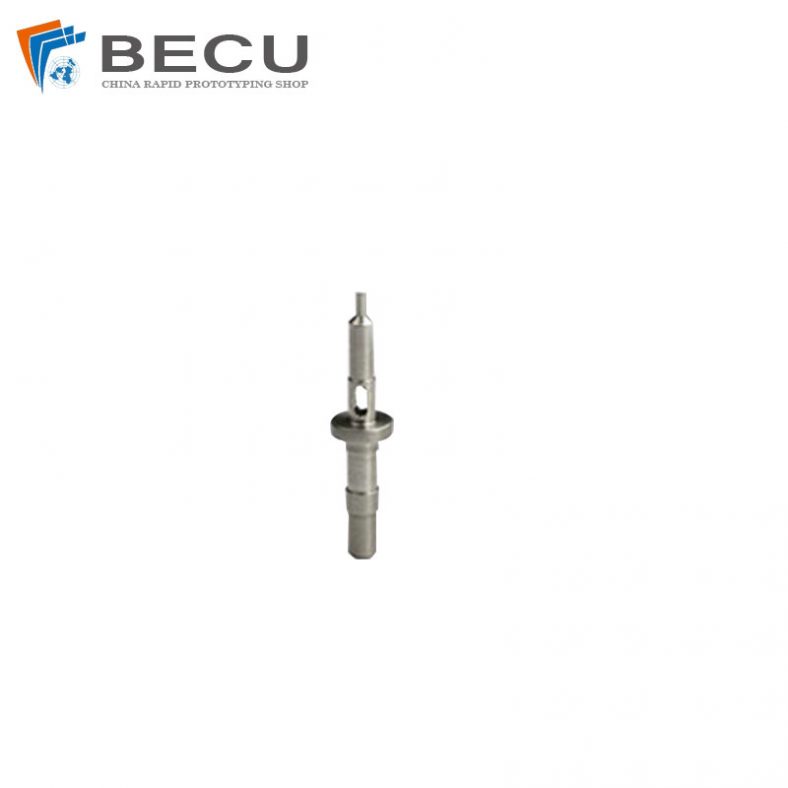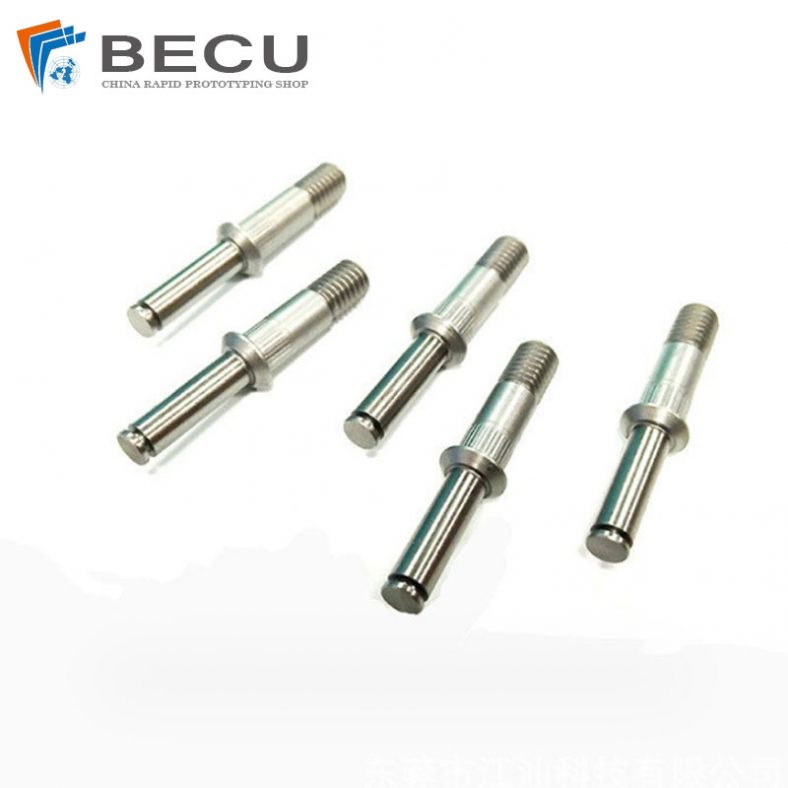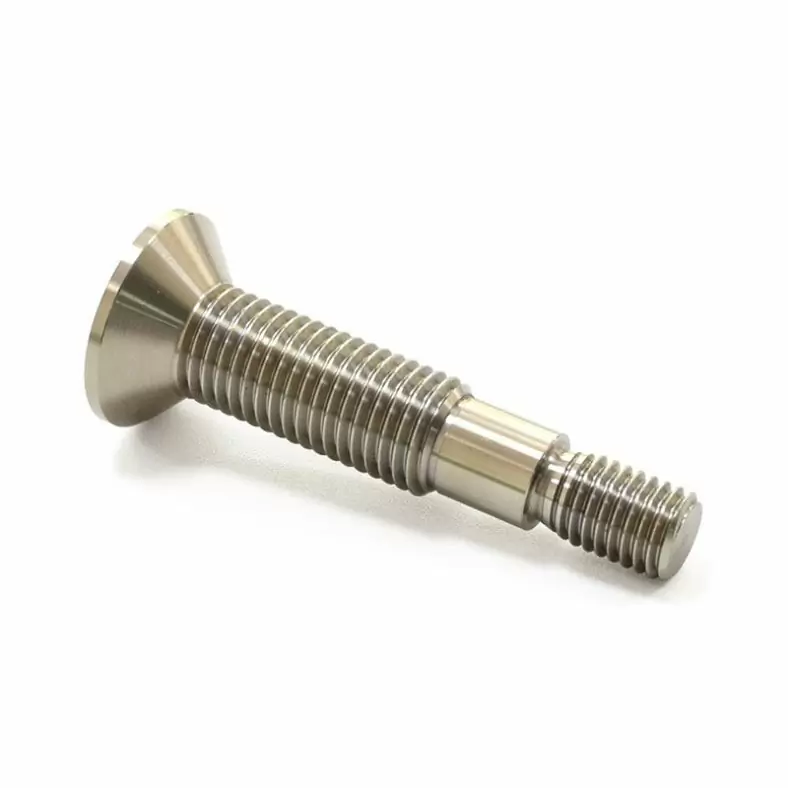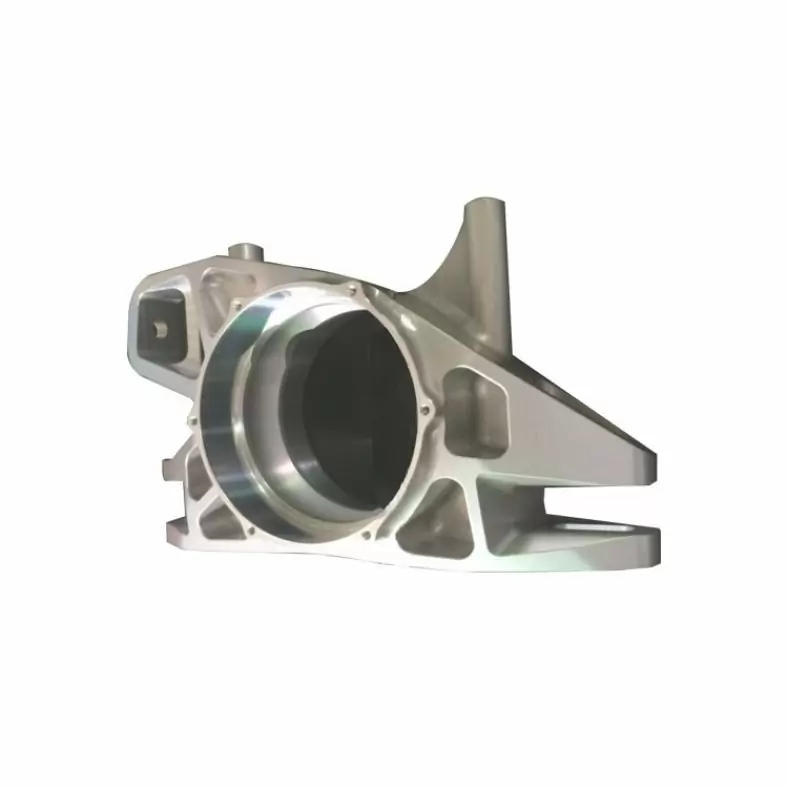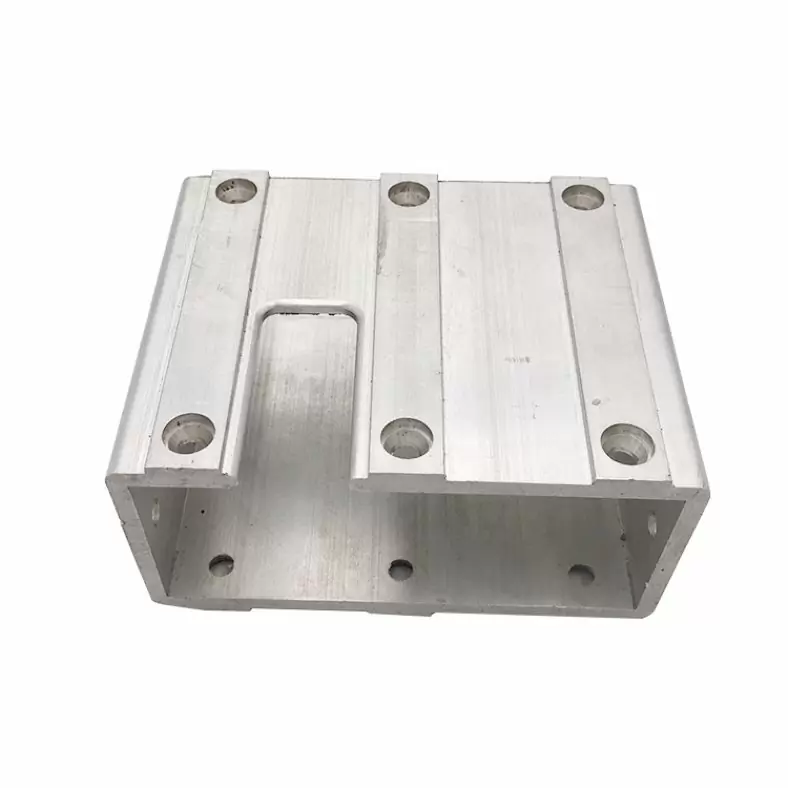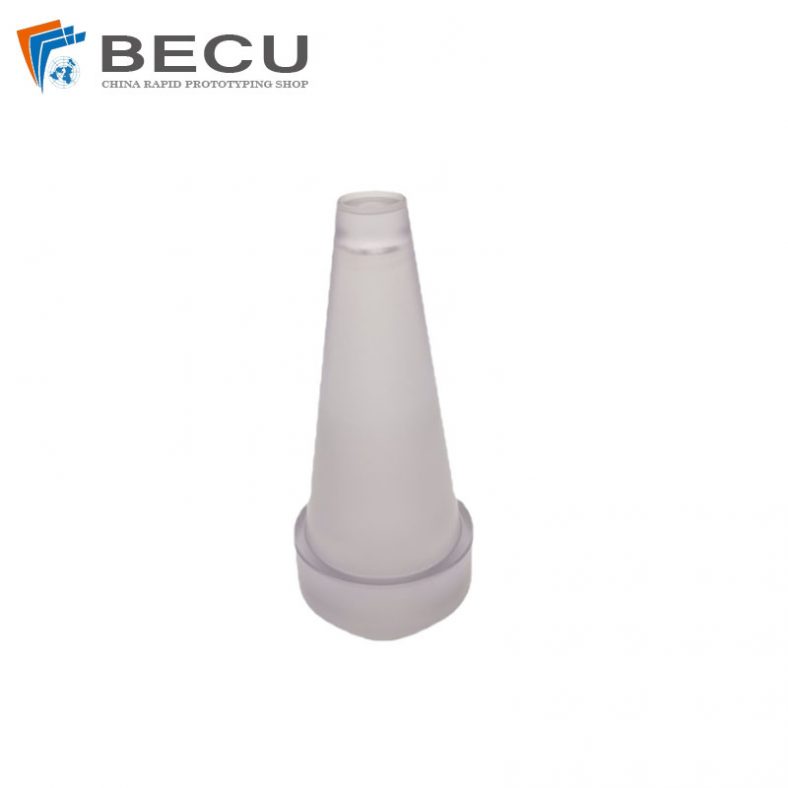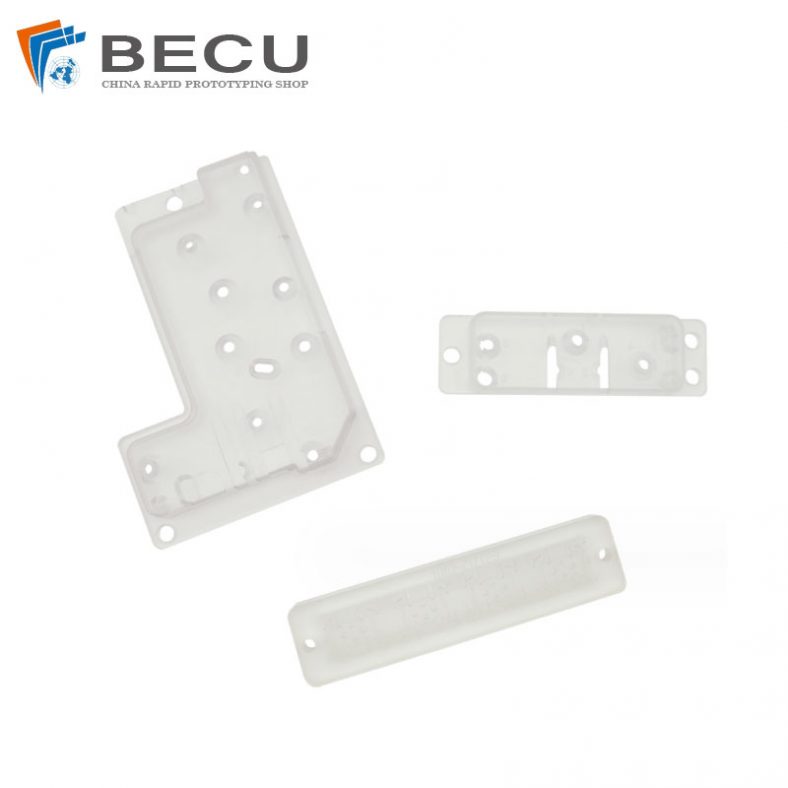Geometric Dimensioning and Tolerancing (GD&T) is a symbolic language used in engineering and manufacturing to specify and communicate design requirements for parts and assemblies. Among the various GD&T symbols and concepts, concentricity is a fundamental geometric characteristic that plays a crucial role in ensuring the functionality and performance of mechanical components. In this comprehensive article, we will delve deep into concentricity, covering its definition, measurement techniques, calculation methods, and how it differs from the concept of runout.
View More Articles:
Introduction
Concentricity is a complex tolerance that is used to ensure the precision of quality in manufacturing including CNC machined parts. What is concentricity in GD&T and how is it measured and calculated? Let’s get into some details and the difference between concentricity and runout.

A. Brief explanation of GD&T
Geometric Dimensioning and Tolerancing, often abbreviated as GD&T, is a symbolic language used in engineering and manufacturing. It provides a standardized way to define and communicate the design requirements for parts and assemblies. GD&T uses symbols, notations, and specific rules to convey information about the size, shape, orientation, and location of features on engineering drawings. This precise language plays a critical role in ensuring that manufactured parts meet the desired specifications, leading to improved quality, reduced production costs, and enhanced product performance.
B. Purpose of the article
The purpose of this article is to provide a comprehensive understanding of Concentration in GD&T, covering its definition, measurement techniques, calculation methods, and how it compares to the concept of Runout. By exploring these aspects in detail, readers will gain valuable insights into how Concentration contributes to the precision and quality of mechanical components in various industries. Whether you’re an engineer, designer, or quality control professional, this article aims to equip you with the knowledge and tools to effectively work with Concentration in your engineering and manufacturing endeavors.
Understanding Concentration in GD&T
A. Definition of Concentration
Concentration in GD&T refers to the geometric characteristic that ensures the alignment of features or elements of a part with respect to a common center point, axis, or origin. It signifies the condition where multiple features share the same central reference, resulting in a harmonious relationship among these features. Concentration can apply to various shapes and forms, but it is commonly associated with cylindrical or rotational features.
B. Significance of Concentration in Manufacturing
Concentration holds significant importance in manufacturing for several reasons:
- Functional Performance: In mechanical systems, especially those involving rotation or precision alignment, Concentration ensures that components work smoothly without excessive vibrations, noise, or wear. Deviations from Concentration can lead to performance issues and even premature failure.
- Balancing: Concentricity, a key aspect of Concentration, plays a vital role in balancing rotating components. Proper balancing is essential for avoiding wobbling and maintaining stability in machinery.
- Interchangeability: Concentricity ensures that parts are interchangeable and can fit together precisely without the need for costly adjustments or customization during assembly.
- Sealing and Lubrication: In applications like seals, gaskets, and bearings, Concentricity is crucial for maintaining effective sealing and lubrication properties. Any deviation from Concentricity can result in leaks or inadequate lubrication, affecting the longevity and performance of the assembly.
C. The Role of Concentricity and Runout in Concentration
Concentricity is closely related to two other GD&T concepts: Concentricity and Runout.
- Concentricity: As mentioned earlier, Concentricity specifically focuses on ensuring that the axes or central points of features align perfectly. It defines the allowable deviation from the true center of a feature within a specified tolerance zone.
- Runout: Runout, on the other hand, measures the maximum variation in the surface or axis of a feature relative to a reference axis. It accounts for radial variations but does not necessarily address axial alignment.
Both Concentricity and Runout play essential roles in assessing Concentration. Concentricity ensures that the central reference points align, while Runout accounts for any radial variations that might affect the overall Concentration of a feature. Understanding the relationship between these concepts is crucial for accurately specifying and verifying Concentration in manufacturing processes.
Measurement Techniques for Concentration
A. Overview of Measurement Methods
The accurate measurement of Concentration is crucial in ensuring that parts and assemblies meet the specified GD&T requirements. Several measurement methods and tools are employed in industry to assess Concentration effectively. This section provides an overview of these methods.
B. The Importance of Accurate Measurement
Accurate measurement is paramount in manufacturing for several reasons:
- Quality Assurance: Precise measurement ensures that parts meet design specifications, reducing the risk of defects and improving overall product quality.
- Compliance: Meeting GD&T requirements is essential for compliance with industry standards and regulations, ensuring safety and reliability.
- Cost Reduction: Accurate measurement helps avoid costly rework and scrap, leading to reduced production costs.
- Performance: In applications involving Concentricity, such as rotating machinery, accurate measurement is critical for optimal performance and longevity.
C. Common Measurement Tools
Different measurement tools and devices are used to measure Concentration based on the specific requirements of the part or feature being assessed. Here are three common measurement tools:
CMM (Coordinate Measuring Machine):
Description: CMMs are precision instruments that use a probe to measure the coordinates of points on the surface of a part.
Advantages:
- High accuracy and repeatability.
- Suitable for complex shapes and 3D measurements.
- Enables data visualization in 3D.
Disadvantages:
- Expensive and requires a dedicated setup.
- Time-consuming for large-scale production.
- Skilled operators are needed for programming and operation.
Roundness Tester:
Description: Roundness testers are specialized instruments designed to assess the roundness and Concentricity of cylindrical features.
Advantages:
- Highly accurate for assessing Concentricity.
- Specifically tailored for cylindrical parts.
- Quick and efficient measurements.
Disadvantages:
- Limited to cylindrical features.
- May not be cost-effective for infrequent use.
Dial Indicators:
Description: Dial indicators are portable, hand-held instruments with a needle-like pointer that moves over a graduated scale as the part is rotated.
Advantages:
- Portable and easy to use.
- Cost-effective for basic measurements.
- Quick setup and inspection.
Disadvantages:
- Limited to manual operation.
- Lower precision compared to CMMs or roundness testers.
- Best suited for simpler measurements.
D. Pros and Cons of Each Measurement Technique
CMM (Coordinate Measuring Machine):
Pros:
- High accuracy and repeatability.
- Suitable for complex shapes.
- 3D data visualization.
Cons:
- Expensive and requires specialized equipment.
- Time-consuming for large-scale production.
- Requires skilled operators for programming and operation.
Roundness Tester:
Pros:
- Highly accurate for Concentricity assessment.
- Specifically designed for cylindrical features.
- Quick and efficient measurements.
Cons:
- Limited to cylindrical features.
- May not be cost-effective for infrequent use.
Dial Indicators:
Pros:
- Portable and user-friendly.
- Cost-effective for basic measurements.
- Quick setup and inspection.
Cons:
- Limited precision compared to CMMs or roundness testers.
- Best suited for simpler measurements and manual operation.
The choice of measurement technique depends on factors such as the required accuracy, the complexity of the part, available resources, and the frequency of use. Each method has its strengths and limitations, and selecting the most suitable one is essential for accurate Concentration assessment.
Calculating Concentration
A. Importance of Calculating Concentration
Calculating Concentration is crucial in GD&T for several reasons:
- Precision Control: Concentration ensures that features are aligned with respect to a common center, which is essential for precise manufacturing.
- Quality Assurance: Accurate Concentration calculations help maintain product quality, reduce defects, and prevent costly rework or scrap.
- Interchangeability: Concentration measurements ensure that parts are interchangeable and can be assembled without issues.
- Performance: In applications like rotating machinery, Concentration directly impacts performance, minimizing vibrations and wear.
B. The Concentricity Formula
The Concentricity Formula is used to calculate Concentricity and determine whether a feature or part aligns with its specified center or axis within the given tolerance zone. It is especially critical for features with circular or rotational characteristics. The formula is as follows:
Concentricity = √((ΔX)^2 + (ΔY)^2)
Components of the Formula:
ΔX: The difference in x-coordinates between the measured center and the true center.
ΔY: The difference in y-coordinates between the measured center and the true center.
How to Apply the Formula:
Measure the actual center of the feature or part.
Measure the true or specified center from the engineering drawing.
Calculate ΔX by subtracting the measured x-coordinate from the true x-coordinate.
Calculate ΔY by subtracting the measured y-coordinate from the true y-coordinate.
Use the formula to calculate the Concentricity error.
C. Illustrative Examples of Concentration Calculations
Let's consider a practical example to demonstrate how to calculate Concentricity:
Example: You have a circular hole in a mechanical component, and its specified center (true center) is at coordinates (50, 50) mm. After measuring the hole, you find the measured center to be at coordinates (50.2, 50.1) mm. Calculate the Concentricity.
Using the Concentricity Formula:
- ΔX = 50.2 - 50.0 = 0.2 mm
- ΔY = 50.1 - 50.0 = 0.1 mm
Concentricity = √((0.2)^2 + (0.1)^2) = √(0.04 + 0.01) = √0.05 ≈ 0.2247 mm
In this example, the Concentricity error is approximately 0.2247 mm. You would compare this value to the specified Concentricity tolerance to determine whether the part meets the GD&T requirements.
Calculating Concentricity provides a quantitative assessment of how closely a feature aligns with its specified center. This information is critical for ensuring that parts meet design specifications and perform as intended in various applications.
Concentration vs. Runout
A. Definition and Explanation of Runout
Runout is another important geometric characteristic in GD&T, and it pertains to the measurement of variations in the surface or axis of a feature relative to a reference axis or datum. It assesses how much a feature deviates from a true circle, line, or other geometric shape when rotated around a specified axis.
In essence, Runout evaluates the maximum wobble or eccentricity in a feature as it rotates or moves relative to a reference. It is often used to assess how smoothly a rotating component will function, including whether there will be issues with vibration or excessive wear.
B. Key Differences between Concentration and Runout
Focus of Measurement:
Concentration: The primary focus of Concentration is to ensure that the center or axis of a feature aligns precisely with a specified point or axis. It assesses the axial and radial alignment of features, emphasizing their centering.
Runout: Runout primarily focuses on the variation in a feature’s surface or axis concerning a reference axis. It is more concerned with the overall circularity and waviness of a feature and doesn’t necessarily address centering.
Suitable Applications:
Concentration: Concentration is particularly suitable for parts and features where precise centering or alignment is critical. It is commonly applied to features like holes, shafts, and circular components used in mechanisms where precise rotation or fit is essential.
Runout: Runout is more versatile and can be applied to both rotational and non-rotational features. It is often used for assessing the quality of cylindrical components, such as shafts and bearings, to determine how well they conform to their intended shape when rotated.
Mathematical Approaches:
Concentration: Concentration is calculated using a formula that computes the Euclidean distance between the measured center and the true center. This formula accounts for both radial and axial alignment.
Runout: Runout calculations focus on measuring the maximum radial deviation of a feature’s surface or axis from a reference axis. It does not consider axial alignment.
C. When to Use Concentration vs. Runout
The choice between Concentration and Runout depends on the specific design and functional requirements of the part or assembly:
Use Concentration When:
Precise axial alignment is critical for functionality, such as in rotating parts, bearings, or components where centering is essential.
Both radial and axial alignment must be controlled within tight tolerances.
The part or feature has a cylindrical or rotational shape.
Use Runout When:
Radial variations are of primary concern, and axial alignment is less critical.
The feature being measured is not necessarily cylindrical or rotational, and circularity is the primary concern.
A more straightforward measurement approach is sufficient for assessing surface or axis quality.
In many cases, Concentration and Runout can complement each other, especially in assemblies where both centering and surface quality are essential. Careful consideration of the specific requirements and functional needs of a part or feature will guide the choice between Concentration and Runout in GD&T applications.
Practical Applications
A. Real-World Examples of Concentration in Different Industries
Concentration, as a fundamental geometric characteristic, finds application across various industries, ensuring precise alignment and functionality of mechanical components. Here are real-world examples of Concentration in different sectors:
Automotive Industry:
Engine Components: In an automotive engine, the concentricity of components like crankshafts, camshafts, and pulleys is critical. Precise alignment ensures smooth engine operation and minimizes wear and vibration.
Aerospace Industry:
Aircraft Landing Gear: The concentricity of landing gear components is vital to ensure proper retraction and deployment during flight operations. Any misalignment could lead to catastrophic consequences.
Medical Device Manufacturing:
Surgical Instruments: Surgical instruments, such as drills and reamers, rely on concentricity to ensure accurate and safe procedures. Precise alignment minimizes the risk of tissue damage during surgery.
Manufacturing and Machining:
Bearing Manufacturing: Bearings are a common example where concentricity is critical. They must be perfectly centered to minimize friction, extend their lifespan, and ensure optimal performance.
Electronics Industry:
Printed Circuit Boards (PCBs): In PCB manufacturing, concentricity ensures that holes for component leads align accurately with the circuit traces. This is crucial for proper electrical connections.
B. How Concentration Impacts Product Functionality
The impact of Concentration on product functionality is substantial:
- Performance: In rotating machinery like engines and turbines, Concentration ensures that parts rotate smoothly without excessive vibrations, leading to improved performance and reduced wear and tear.
- Balancing: Concentricity is crucial for balancing components. Proper balance minimizes wobbling and vibrations, improving the efficiency and safety of mechanical systems.
- Interchangeability: Concentricity allows parts to be manufactured with tighter tolerances, facilitating interchangeability. This reduces the need for custom fitting or adjustments during assembly.
- Sealing and Lubrication: In seals, gaskets, and bearings, Concentricity plays a vital role in maintaining effective sealing and proper lubrication. Any deviation can lead to leaks or inadequate lubrication, affecting product reliability.
C. Case Studies Highlighting the Importance of Concentration Control
- Automotive Case Study:Issue: An automotive manufacturer experienced excessive vibration and premature wear in their engines.Solution: By implementing stricter Concentricity control in the manufacturing process of engine components such as camshafts and pulleys, they reduced vibrations and improved the overall performance and longevity of their engines.
- Medical Device Case Study:Issue: A medical device manufacturer faced a high rate of surgical complications due to misaligned surgical instruments.Solution: After incorporating Concentricity measurements into their quality control process, they ensured that surgical instruments, particularly drills and reamers, were consistently aligned. This led to a significant reduction in complications and improved patient outcomes.
- Aerospace Case Study:Issue: An aerospace company experienced frequent landing gear malfunctions.Solution: Through rigorous Concentricity checks and adjustments in the landing gear manufacturing process, they achieved better alignment of critical components. This resulted in safer takeoffs and landings, reducing the risk of accidents.
These case studies underscore the critical role of Concentration control in various industries. It not only enhances product performance but also contributes to safety and reliability, making it an essential aspect of manufacturing and engineering quality control.
Conclusion
A. Recap of Concentration in GD&T
In this comprehensive exploration of Concentration in Geometric Dimensioning and Tolerancing (GD&T), we have covered the essential aspects of this geometric characteristic. Concentration, symbolized by the circled “C” or “CONC” on engineering drawings, ensures that features or elements of a part align with a common center point, axis, or origin. It plays a pivotal role in achieving precision and functionality in mechanical components, particularly in industries such as automotive, aerospace, and medical device manufacturing.
B. Emphasis on the Importance of Accurate Measurement and Control
Accurate measurement and control of Concentration are paramount in manufacturing. The techniques and tools discussed, including Coordinate Measuring Machines (CMMs), Roundness Testers, and Dial Indicators, are essential for assessing Concentration with precision. Accurate measurement not only enhances product quality but also helps meet GD&T requirements, reducing defects, rework, and production costs.
Concentration measurements also contribute to product performance, reliability, and safety, particularly in applications involving rotating machinery, sealing, and precision alignment.
C. Final Thoughts on Concentration vs. Runout and Their Roles in Manufacturing Precision
In summary, Concentration and Runout are two related but distinct GD&T concepts. Concentration focuses on ensuring precise alignment of features with respect to a common center, while Runout assesses variations in the surface or axis of a feature when rotated around a reference axis. Both concepts play crucial roles in achieving manufacturing precision, but their applications differ based on the specific requirements of a part or assembly.
Understanding when to use Concentration vs. Runout is vital for effective design and quality control. Concentration is best suited for applications where precise centering is critical, while Runout is versatile and can assess circularity and waviness in features. In many cases, both Concentration and Runout complement each other, providing comprehensive control over the geometric characteristics of components.
In conclusion, Concentration and Runout, when used appropriately, contribute to the success of manufacturing processes, ensuring that parts and assemblies meet design specifications, perform as intended, and contribute to product quality and reliability. Mastering these concepts is essential for engineers, designers, and quality control professionals striving for excellence in mechanical design and production.


